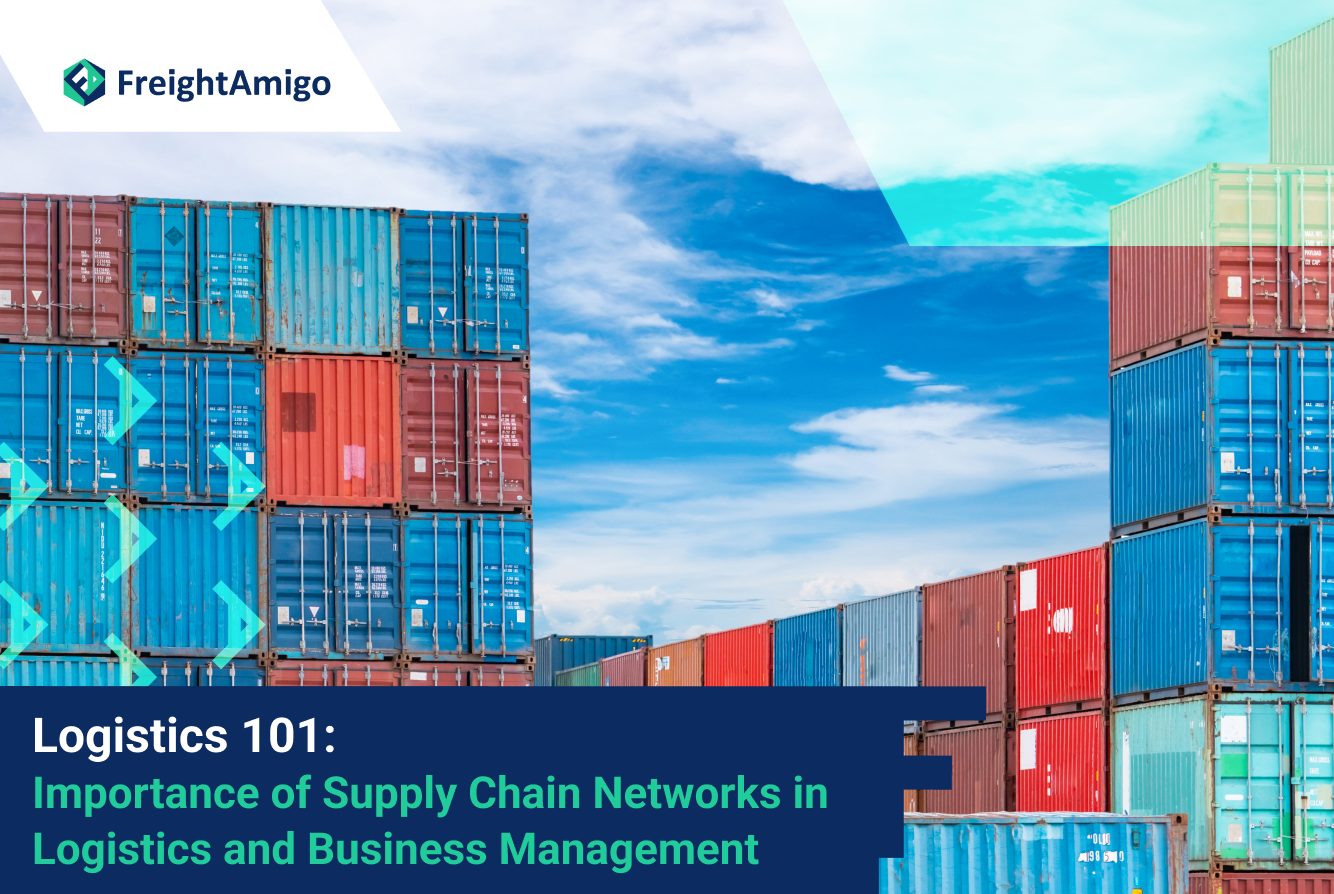Supply chain networks play a crucial role in the success of logistics and business managers. These networks provide a comprehensive view of the flow of materials and information, allowing organizations to understand the entire journey from production to the end customer. By examining supply chain networks, firms can identify opportunities for collaboration and partnership to maximize value for the end customer.
Author Name:Tiffany Lee – Marketing Analyst at FreightAmigo
Want to compare the best Express, Air Freight, Sea Freight, Rail Freight & Trucking rates so as to have better control on cost?
What is Supply Chain Networks?
Before delving into the importance of supply chain networks, it is essential to have a clear understanding of what a supply chain is. A supply chain is a series of interconnected processes that form a chain, linking various organizations together to serve the end customer. Supply chains and supply networks both describe the flow and movement of materials and information, but with slight differences. A supply chain refers to a simpler, sequential set of links, while a supply chain network represents a more complex structure with cross-linkages and two-way exchanges between organizations.
The Power of Supply Chain Networks
While the supply chain diagram provides a clear picture of the flow of materials, a supply chain network goes a step further by illustrating the links between organizations and the exchange of information and materials within these links. The more detailed the supply chain network, the more complex and interconnected it becomes.
Organizations within a supply chain network are linked through two primary flows: material flow and information flow. Material flow represents the movement of goods from raw primary materials to finished products delivered to the final customer. In contrast, information flow involves the transmission of demand information from the end customer to the preceding organizations in the network.
To gain a comprehensive understanding of a supply chain network, it is crucial to map both the material and information flow. By doing so, organizations can identify inefficiencies and take necessary steps to eliminate them. For instance, sharing sales data and demand forecasts with suppliers enables them to reduce costs, such as overproduction waste, and improve pricing.
Enhancing Efficiency and Collaboration
Developing strong partnerships within the supply chain network is essential for better serving the end customer, regardless of whether you are a manufacturer, distributor, or retailer. Effective communication and collaboration increase efficiency and productivity, leading to improved customer satisfaction and loyalty. Trust forms the core ingredient for fostering better communication and relationships within the supply chain network.
FreightAmigo serves as a vital link within the supply chain network by providing cross-border logistics solutions, facilitating international trade, enabling cargo tracking and visibility, and fostering collaboration among supply chain stakeholders. Their comprehensive services ensure the seamless flow of goods, optimize supply chain operations, and enhance the competitiveness of businesses. With their global transportation network and expertise in navigating customs affairs, FreightAmigo empowers businesses to leverage Free Trade Agreements, expand their market reach, and achieve efficient and reliable international trade operations.
Benefits of Supply Chain Networks
Implementing and effectively managing supply chain networks offer numerous benefits for logistics and business managers. Let us explore some of these advantages:
-
Increased Visibility and Transparency
Supply chain networks provide a holistic view of the entire supply chain, allowing managers to track the flow of materials and information at every stage. This visibility enables them to identify bottlenecks, inefficiencies, and areas for improvement.
-
Enhanced Collaboration and Partnerships
Supply chain networks foster collaboration and partnerships between organizations within the network. By working together, stakeholders can pool their expertise, share resources, and develop innovative solutions to challenges. This collaboration leads to improved efficiency, reduced costs, and increased value for the end customer.
-
Improved Inventory Management
With a clear understanding of the supply chain network, managers can optimize inventory levels and reduce the risk of stockouts or excess inventory. By aligning production and distribution with demand signals from the network, organizations can ensure timely delivery and minimize holding costs.
-
Streamlined Processes and Reduced Costs
Supply chain networks enable organizations to streamline their processes by eliminating redundant activities and optimizing workflows. This streamlining leads to cost savings, improved operational efficiency, and faster time-to-market.
-
Risk Mitigation and Resilience
By diversifying the network and building strong relationships with multiple suppliers and partners, organizations can mitigate risks associated with disruptions, such as natural disasters, geopolitical events, or supplier failures. A robust supply chain network enhances resilience and enables organizations to quickly adapt to unforeseen circumstances.
-
Customer Satisfaction and Loyalty
Supply chain networks focus on meeting customer needs and delivering value. By optimizing the network and providing efficient and reliable services, organizations can enhance customer satisfaction, build long-term loyalty, and gain a competitive edge in the market.
-
Data-Driven Decision Making
Supply chain networks generate a wealth of data that can be analyzed to gain insights and make informed decisions. By leveraging data analytics and technologies like artificial intelligence and machine learning, managers can identify patterns, predict demand, and optimize operations to drive business growth.
Unleashing Synergy: Leveraging Supply Chain Networks for Optimal Logistics and Business Performance
Supply chain networks are of paramount importance for logistics and business managers. These networks provide a holistic view of the flow of materials and information, enabling organizations to identify opportunities for collaboration, enhance efficiency, and deliver maximum value to the end customer. With the support of service providers like FreightAmigo, businesses can leverage the power of supply chain networks to optimize their operations, streamline processes, and drive growth in the dynamic global marketplace.
There are different options for cargo transportation. If you want to choose the most convenient and suitable solution, it is best to have the full support of logistics experts! If you are planning to ship goods overseas, please go to the FreightAmigo page for inquiries.
===
Read More:
【The Key Trade Partners of the USA】Boosting International Commerce
【Goods-to-Person Systems】Revolutionize Order Picking in Warehouses
【Logistics 101】Unlocking the Benefits of Foreign-Trade Zones (FTZs) for Your Business
===
If you have any inquiries on logistics/supply chain, feel free to contact FreightAmigo now:
Chat with us online OR
Phone : +852 28121686
WhatsApp: +852 27467829









































